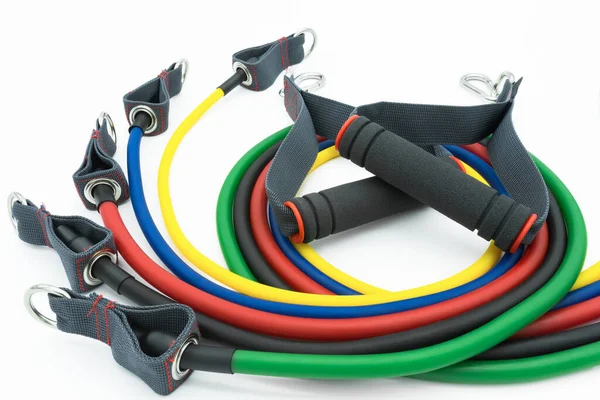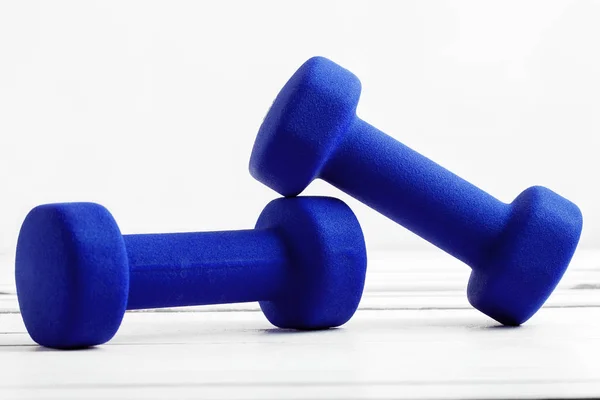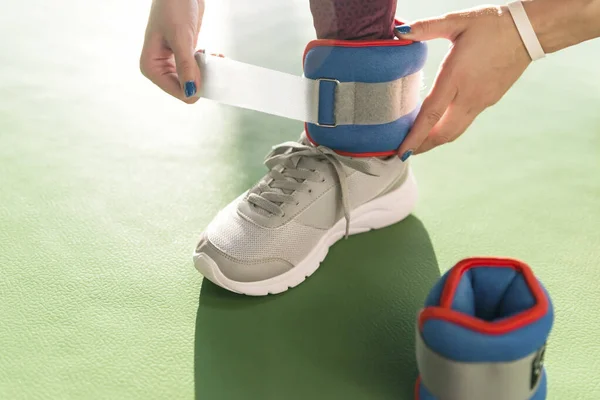Resistance bands vs free weights for rehab—which one is better for healing and getting stronger? If you’re recovering from an injury or surgery, choosing the right tool can make a big difference. Some people say resistance bands are safer. Others believe free weights build more strength. So, who’s right?
In this post, we’ll break it down in a way that’s easy to understand. You’ll learn how each one works, when to use them, and what physical therapists really recommend. Plus, we’ll share expert tips and must-have gear to help you recover faster—right from home.
Table of Contents
📢 Before you continue! Sign up below for weekly home recovery tips, injury rehab advice, and therapist-approved gear reviews straight to your inbox!!
🏁 Introduction
When it comes to rehab and injury recovery, choosing the right strength training equipment is key. One common question physical therapists hear is:
“Should I use resistance bands or free weights for my rehab exercises?”
The truth is—both tools have their place in a solid recovery plan. In this article, you’ll learn how they compare and which one physical therapists often recommend depending on the stage of healing, injury type, and rehab goals.
🧠 The Role of Strength Training in Rehabilitation
After injury or surgery, rebuilding strength is essential. Progressive resistance helps:
- Improve mobility
- Prevent muscle atrophy
- Restore function
- Reduce risk of re-injury
Whether you’re recovering from a shoulder tear, knee replacement, or back injury, using the right resistance tools can dramatically affect outcomes.
🟩 What Are Resistance Bands?
Resistance bands are elastic bands used to provide variable tension during exercise. They come in multiple forms:
- Flat therapy bands (like TheraBand)
- Loop bands
- Tube bands with handles
👉 Great for beginners and people with limited joint mobility.


🟫 What Are Free Weights?
Free weights include:
- Dumbbells
- Kettlebells
- Ankle/wrist weights
These provide consistent, gravity-based resistance. While more versatile for compound exercises, they require good form and joint stability.


⚖️ Key Differences: Resistance Bands vs Free Weights in Rehab
| Feature | Resistance Bands | Free Weights |
|---|---|---|
| Resistance Type | Elastic, variable | Fixed, gravity-based |
| Joint Impact | Low-impact | Moderate to high |
| Portability | Lightweight, travel-friendly | Bulky |
| Progression Options | Limited to band strength | Wide range of weights |
| Ideal for | Early-stage rehab | Mid-to-late stage rehab |
✅ Benefits of Resistance Bands for Physical Therapy
- Safe for post-op patients
- Allows full range of motion
- Perfect for rotator cuff, ACL, and low back pain
- Reduces joint strain
🚨Our Top Picks for Rehab and Recovery!!
Recommended: TheraBand Resistance Bands Set (click to view on Amazon) – Ideal for physical therapy, color-coded for different tension levels.⭐⭐⭐⭐⭐
🏋️ Benefits of Free Weights in Injury Recovery
- Help build functional strength
- Useful in late-stage rehab
- Beneficial for balance, bone density, and core control
- Better for progressive overload
🚨Our Top Picks for Rehab and Recovery!!
Try This: Adjustable Dumbbell Set for Rehab (click here to view on Amazon) – Adjustable weight options make it easy to progress as you get stronger.⭐⭐⭐⭐⭐
🧯 Which Is Safer for Rehab Patients?
For most people recovering from injury or surgery, resistance bands are safer initially because:
- They don’t rely on gravity
- They create less compression on joints
- They’re easier to control
As mobility and strength return, free weights can be introduced gradually under guidance from a licensed PT.
👨⚕️ Physical Therapists’ Recommendations by Injury Type
✅ Shoulder Rehab
- Start with bands (especially for rotator cuff or impingement)
- Add dumbbells later for overhead strength
✅ Knee Rehab
- Bands for quad activation and hip abduction
- Add ankle weights or dumbbells for lunges, squats, and step-ups
✅ Post-Surgery Recovery
- Bands first to improve motor control
- Free weights for full-body coordination later

🏠 Best Tools for Home Rehab Workouts
Here are top picks PTs often recommend:
| Tool | Use Case | Link |
|---|---|---|
| TheraBand Resistance Band Set | All-around rehab band option | View on Amazon |
| Fit Simplify Loop Bands | Hip & glute rehab, postural control | View on Amazon |
| Adjustable Dumbbells (5–25 lbs) | Progressive strength recovery | View on Amazon |
| Ankle Weights (1–5 lbs) | Knee, hip, and ankle rehab | View on Amazon |
🧾 Final Verdict
Use resistance bands in the early stages of rehab, especially when joint integrity and motor control are the priority.
Introduce free weights in the mid-to-late stages of rehab when strength, coordination, and endurance need to be rebuilt.
🎯 Pro Tip: Always follow your physical therapist’s advice when transitioning from bands to weights.
❓ Frequently Asked Questions
Can resistance bands replace free weights in rehab?
✅ For early stages—yes. But for full strength restoration, adding weights is recommended.
Are resistance bands effective for injury recovery?
Absolutely. Bands are one of the most versatile and joint-friendly tools in rehab.
Which is safer after surgery: bands or dumbbells?
Resistance bands are safer right after surgery. Free weights can come later under PT supervision.
Can I use both resistance bands and free weights in rehab?
Yes! Many PTs design hybrid programs using both for the best results.
📢Ready to try the best tools for your home rehab? Explore our recommended products and improve your fitness with resistance bands and free weights!





